Free Guide to Mirroring iPhone on Android TV
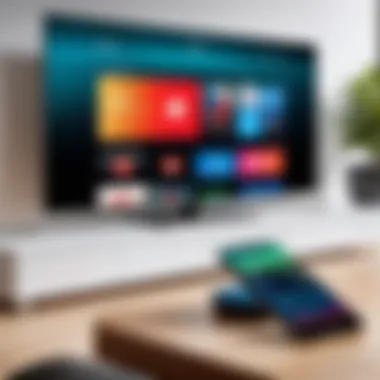
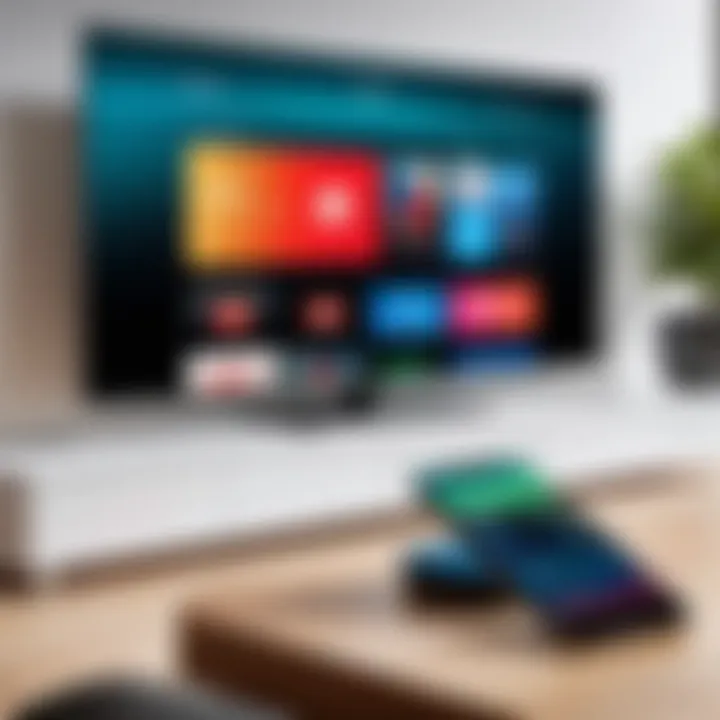
Intro
In today’s digital age, connecting devices for seamless media consumption has become a priority for many users. Mirroring an iPhone to an Android TV is a practical solution for sharing content on a larger screen. Whether it’s streaming videos, displaying photos, or showcasing presentations, the ability to view your iPhone's screen on a TV can greatly enhance the viewing experience. This guide examines methods to achieve this without any cost, providing options both for tech-savvy individuals and casual users alike.
Overview of the Technology
Mirroring technology allows one device to replicate the display of another on a separate screen. This can be particularly useful in various scenarios, from personal entertainment to professional presentations. By using specific protocols and applications, a user can connect their iPhone to an Android TV, transforming the way content is enjoyed and shared.
Key specifications
- Wi-Fi Connectivity: Most mirroring technologies rely on Wi-Fi to facilitate the connection. This can include Wi-Fi Direct or a local Wi-Fi network.
- Resolution Support: Optimal mirroring should support high-definition resolutions, ensuring that content appears sharp and clear.
- Latency Rates: Effective screen mirroring needs to minimize lag between the source device and the receiving display, providing a fluid experience when streaming video.
Unique selling points
- Ease of Use: Many applications and methods require minimal setup, appealing to users who may not be as tech-savvy.
- Versatility: Users can mirror various content types, making it suitable for both entertainment and business applications.
- Cost-Effective Solutions: Many free options allow users to utilize existing devices without additional investments.
Benefits of Screen Mirroring
Screen mirroring offers several advantages:
- Enhanced Viewing Experience: Larger displays provide better viewing for groups.
- Convenient Sharing: Easily share photos, videos, and presentations without needing physical connectors.
- Multi-Device Functionality: The ability to switch between devices like smartphones, tablets, and smart TVs broadens the spectrum of usability.
"The ability to mirror your iPhone to an Android TV opens up a new realm of media access and social interaction, making viewing experiences more engaging."
Understanding these features lays a foundation for exploring specific methods of mirroring, allowing users to make informed choices based on their specific needs. In the upcoming sections, we will evaluate practical steps and popular applications to facilitate this connection.
Prelims to Screen Mirroring
Screen mirroring has become an essential feature for many mobile users. It allows individuals to share the content of their smartphones, like an iPhone, directly on larger screens, such as Android TVs. In this age of multimedia consumption, having the ability to display mobile content on a bigger screen enhances user experience significantly.
With various forms of entertainment consumed today, from movies and videos to presentations, effectively mirroring a device can transform the way a user interacts with content. Understanding pivotal aspects regarding this feature will help users make the most out of their devices.
Definition and Purpose
Screen mirroring refers to the process of duplicating the screen of a mobile device onto another display, such as a TV. The content shown on the smartphone is displayed simultaneously on the larger screen. The main purpose of screen mirroring is to provide a seamless method for content sharing. This simplifies the enjoyment of media, whether for personal use or presentations. It encourages social interactions by sharing content effortlessly with friends and family.
Benefits of Mirroring
The benefits of screen mirroring are numerous. Here are key advantages:
- Enhanced Viewing Experience: A larger screen makes viewing videos, photos, and presentations more enjoyable and engaging.
- Ease of Use: Most mirroring options are straightforward to set up and require only a few taps.
- Collaboration: It facilitates sharing ideas and information during meetings. Users can display reports, charts, or any relevant data efficiently.
- Gaming: Many gaming enthusiasts prefer mirroring their mobile games on large screens for a better gaming experience.
Understanding Device Compatibility
Device compatibility is essential when it comes to mirroring an iPhone to an Android TV. Not all devices support screen mirroring, so knowing your specific model's capabilities ensures a smooth connection and usability.
iPhone Specifications
Apple’s iPhones come equipped with various features aimed at enhancing the user experience. The critical specifications to note include:
- Operating System: Ensure your iPhone runs on iOS 11 or later for optimal compatibility with mirroring applications.
- Screen Mirroring Feature: Check the presence of Apple’s AirPlay feature, which is standard on most iPhone models from the iPhone 4s onwards. This feature is crucial for seamless sharing.
- Wi-Fi Connectivity: iPhones require an active Wi-Fi connection for screen mirroring. Always verify network access to avoid connectivity issues.
These aspects are important for achieving reliable screen-sharing functionality without technical interruptions or failures during the process.
Android TV Models
Not all Android TVs possess the same capabilities for mirroring. Certain specifications are valuable for a seamless mirroring experience:
- Model Variants: Modern Android TVs, like those from Sony, LG, or Samsung, typically support various casting technologies. Each varies in features such as Google Cast, which leverages built-in support for screen mirroring.
- Updates and Firmware: Keep an eye on the version of Android OS running on your TV. Positive improvements and fixes may be available in the latest updates, so check periodically and apply updates if necessary.
- Wi-Fi Standards: Ensure that your Android TV supports at least Wi-Fi 802.11n or higher. A stable and robust network connection will minimize latency.
In summary, both the capabilities of the iPhone and the specifications of the Android TV significantly impact the screen mirroring process. This knowledge allows users to select the right tools and methods for successful mirroring. By understanding these compatibility aspects, one can avoid frustration and enhance the overall viewing experience.
Required Tools and Applications
To successfully mirror an iPhone to an Android TV, it is crucial to understand the tools and applications that facilitate this process. These elements constitute the backbone of effective screen mirroring. Having the right tools enhances the user experience, ensures compatibility between devices, and smoothens the overall procedure.
Wi-Fi Network Setup
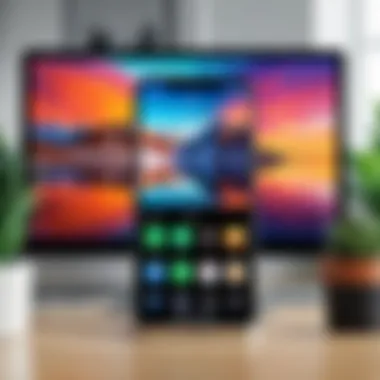
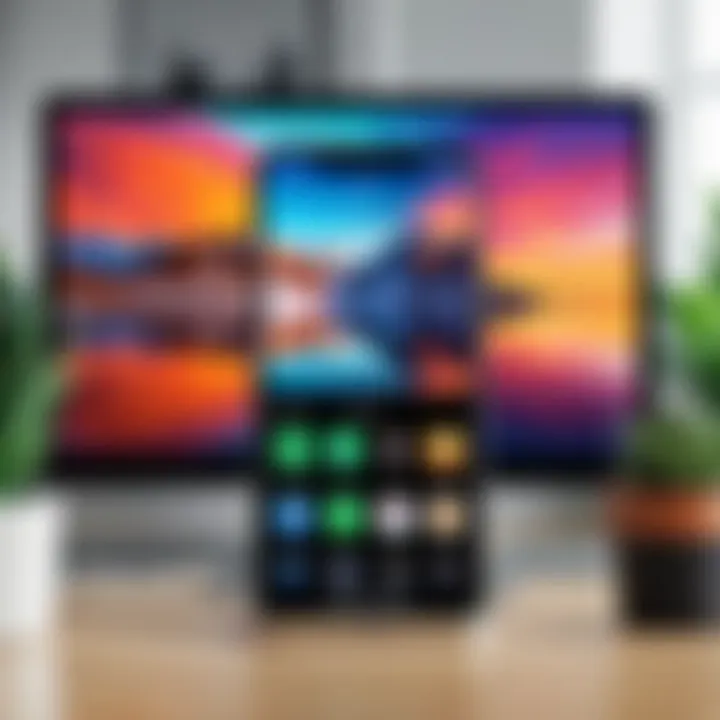
A stable Wi-Fi network serves as the foundational element for screen mirroring. Both the iPhone and the Android TV need to be connected to the same Wi-Fi network to establish a successful connection. This setup is essential because the mirroring process relies on the network to transmit data.
Ensure that the network is fast enough to handle the streaming workload without lag. Moreover, network security should not be overlooked. Ensure that your network is secured with a strong password to prevent unauthorized access during mirroring sessions. A well-configured Wi-Fi connection considerably reduces potential disruptions, leading to a better streaming experience.
Mirroring Software Options
Several software options enhance the mirroring experience. Each application has unique characteristics that cater to different user needs. Below are discussions on three popular mirroring applications:
Google Home
Google Home represents an accessible and user-friendly option for mirroring. Its integration with the Google ecosystem is a significant advantage, allowing seamless interaction with various smart devices. The application is versatile, providing compatibility not only with Android TVs but also with other Google-enabled devices.
One of the key features of Google Home is its voice command functionality, which allows users to control and manage their setup through simple voice instructions. This integration simplifies the user experience, making it an appealing choice for tech enthusiasts. However, it is primarily geared for users already embedded in the Google ecosystem, which might limit its effectiveness for those less familiar with these products.
AirScreen
AirScreen is another strong contender in the mirroring application space. It supports a wide range of protocols, including AirPlay and Miracast. This versatility makes it compatible with various devices beyond just iPhones, broadening its usability.
Its key characteristic is the ability to stream high-definition content without significant loss of quality, enhancing the viewing experience. However, some users may find the setup to be slightly complicated if they are unfamiliar with network configurations. The interface is intuitive, yet initial connection steps require careful attention to detail.
ApowerMirror
ApowerMirror offers a comprehensive mirroring solution with a rich set of features. It allows not just screen mirroring but also screen recording. This feature is particularly useful for those who wish to create tutorials or capture gameplay. The application provides a polished user interface that facilitates ease of use.
One unique aspect of ApowerMirror is its ability to mirror across different platforms, ensuring that users can connect devices with varying operating systems. This application’s flexibility is a significant draw for many, although it requires a subscription for some advanced features, which may be a downside for budget-conscious users.
Methods for Screen Mirroring
The process of screen mirroring has gained significant attention in recent years, especially with the increasing use of smart TVs. Ensuring that an iPhone can connect to an Android TV effectively involves understanding the available methods. This section delves into the major options for screen mirroring. Knowing the methods allows users to select the most effective solution for their needs.
Using Built-In Features
iOS Screen Mirroring
A prominent method for sharing an iPhone's display is iOS Screen Mirroring. This built-in feature enables seamless pairing of your device with a compatible TV, usually through Wi-Fi. It allows users to view photos, stream videos, and even navigate applications directly on their TV screens.
One key characteristic of iOS Screen Mirroring is its user-friendliness. The process involves simple steps: open the Control Center on your iPhone, tap "Screen Mirroring," and select the Android TV. This ease of use contributes to its popularity and makes it a first choice for many users. However, one disadvantage is that the Android TV must support AirPlay technology for this feature to work effectively. If it doesn’t, users may need to explore third-party options.
Cast to TV
Another convenient method is the Cast to TV feature, which allows users to stream content from supported applications directly to their Android TV. This is particularly beneficial when using apps like YouTube or Netflix, as they natively support casting. By tapping the Cast icon within the app, users can easily switch their content to the larger screen, enhancing the viewing experience greatly.
The key characteristic of this method is its compatibility across many widely-used applications. It is a favored choice as the setup doesn't require extensive configuration. Nevertheless, the content must be from an app that supports casting, limiting its functionality for users who wish to mirror their entire screen.
Employing Third-Party Applications
Application Installation
Third-party applications have become increasingly popular for screen mirroring due to their versatility. With tools like ApowerMirror or AirScreen, users can connect their iPhone to Android TV without the need for built-in options. Installation is generally straightforward, typically involving downloading the app on the Android TV from the Play Store and the companion app on the iPhone from the App Store.
One unique aspect of these applications is their ability to enhance functionality, such as supporting additional file types or allowing for better video quality. They often come with user-friendly interfaces but may require users to manage more settings compared to built-in features. Security and potential privacy issues can arise with third-party options; therefore, it is essential to choose reputable applications with positive reviews.
Setup and Configuration
Setting up and configuring these third-party applications requires careful attention. After installation, both devices need to be connected to the same Wi-Fi network for the mirroring to function. Following this, users typically need to follow on-screen prompts to complete the configuration process.
This setup process is generally streamlined in most applications, but users should consider their internet speed and network stability, as these can directly affect performance. An advantage of using third-party apps is their advanced features, such as screen recording or easy switching between devices. Nevertheless, users may encounter occasional troubleshooting issues during setup, which can be inconvenient.
Connecting Devices
Connecting devices is a crucial aspect of mirroring an iPhone to an Android TV. Without a seamless connection between the two, the entire process becomes ineffective. This section aims to clarify the procedures and significance of successfully linking these devices. The benefits of a solid connection include enhanced performance in streaming and reduced latency, which ultimately leads to a more enjoyable viewing experience.
Initial Setup
Before attempting to connect your iPhone to the Android TV, certain prerequisites must be satisfied. First, ensure that both your iPhone and Android TV are connected to the same Wi-Fi network. This step is vital, as the mirroring process relies on a common network to facilitate communication between the devices.
To begin, follow these steps:
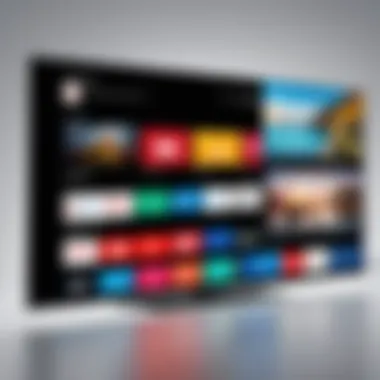
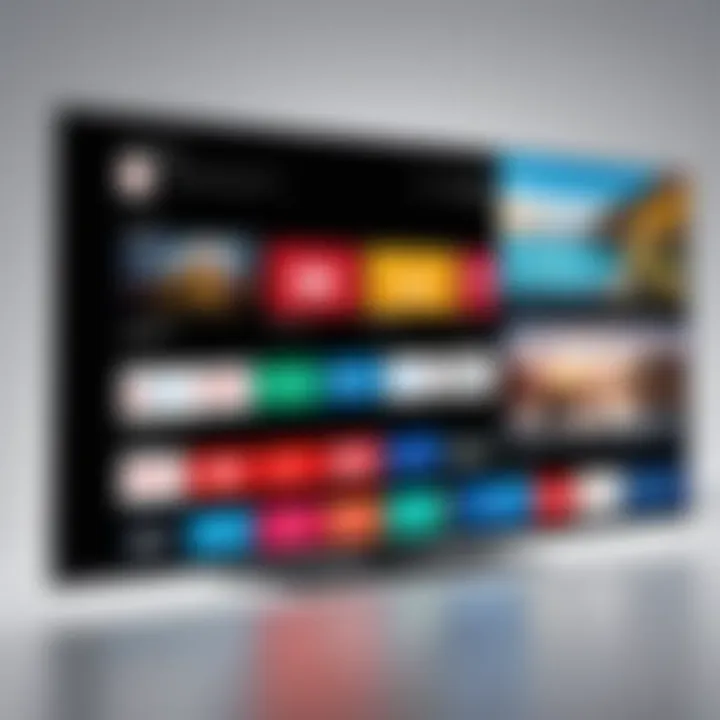
- Wi-Fi Network Confirmation
- Android TV Setup
- Software Updates
- Open the Settings app on your iPhone.
- Tap on Wi-Fi and ensure it is turned on.
- Check that your network matches the one your Android TV is connected to.
- Turn on your Android TV and navigate to the Settings menu.
- Access Network settings and confirm it is connected to the same Wi-Fi network as your iPhone.
- Make sure your iPhone and Android TV both have the latest software installed.
- This ensures compatibility and reduces the likelihood of software-related issues during mirroring.
With these steps completed, the devices are prepared for the connection process.
Establishing a Connection
Establishing a connection between the iPhone and Android TV is the next logical step. There are several methods to achieve this. You can utilize built-in features or third-party applications designed for this purpose.
For Built-in Features:
- On your iPhone, swipe down from the upper right corner to access the Control Center.
- Tap on Screen Mirroring and look for your Android TV in the list of available devices.
- Select it, and if prompted, enter a code displayed on your TV.
For Third-Party Applications:
- Open the desired screen-mirroring app on both your iPhone and Android TV.
- Follow the prompts within the application to connect the devices, often involving selecting an option that shows the TV name.
It is crucial to have a stable Wi-Fi connection during this process, as interruptions can lead to failed connections.
In summary, connecting an iPhone to an Android TV is a straightforward process if certain steps are followed meticulously. This ensures that users can enjoy their favorite content on a larger screen without undue frustration.
Troubleshooting Common Issues
When attempting to mirror an iPhone to an Android TV, it is crucial to recognize the potential challenges that may arise during the process. Troubleshooting common issues not only enhances the user experience but also allows for a seamless integration of devices. Understanding these challenges can prevent frustration and ensure that users can fully benefit from the functionalities available. Addressing these concerns effectively enables users to enjoy their media content without interruptions.
Connection Failures
Connection failures can occur due to several reasons when mirroring an iPhone to Android TV. These failures typically stem from network issues, device incompatibility, or software glitches. To address these issues, begin by ensuring that both the iPhone and Android TV are connected to the same Wi-Fi network. This is crucial for establishing a successful connection.
If the devices are on the same network and a failure still occurs, restarting both devices may help. In some instances, software updates could also resolve connectivity problems. Verify that both devices are running the latest operating systems, as updates often include bug fixes and enhancements.
If the problem persists, consider checking the settings on your Android TV. Ensure that screen mirroring is enabled in the device settings. On some devices, you may need to activate options such as "Allow wireless display."
Important: If you have multiple Wi-Fi networks at home, ensure you are not connected to a guest network, as this may prevent mirroring.
Audio-Video Sync Problems
Audio-video sync problems can be a common frustration during screen mirroring. When the audio lags behind the video or vice versa, it diminishes the viewing experience. Such issues can often occur due to network latency or insufficient bandwidth. A strong and stable Wi-Fi connection is vital for smooth performance.
To mitigate audio-video sync issues, first, check for other devices using the same network. If there are too many devices connected, try disconnecting some to free up bandwidth.
Additionally, use applications known for their effectiveness in mirroring. For instance, Google Home, AirScreen, or ApowerMirror can often provide better results compared to built-in mirroring options. You may also want to experiment with different mirroring software or hardware setups if sync problems persist, including adjusting video quality settings within those applications.
Exploring Alternative Solutions
When considering how to mirror an iPhone to an Android TV, exploring alternative solutions is crucial. These alternatives provide additional flexibility beyond standard methods. Users seeking to optimize their experience can utilize a variety of tools and methods that may suit different preferences and requirements.
One significant advantage of exploring alternatives is the ability to cater to various environments and situations. For example, different social settings may call for differing needs. In some cases, a user may wish to share content from their iPhone in a quick and informal setting, such as during a family gathering. In such scenarios, a fast and straightforward solution like Chromecast could prove ideal. Alternatively, some users may prefer a more comprehensive connection, particularly for extended viewing sessions, where using an HDMI cable might offer better stability and quality.
Additionally, understanding the unique features of each alternative can enhance user satisfaction. For instance, wireless solutions might ease the clutter of cables, while wired connections typically assure constant quality and reduced lag. It is wise to consider these factors when deciding how to mirror effectively. Therefore, knowing which alternative to choose based on context can elevate user experience substantially.
Using Chromecast
Using Chromecast is a popular method among individuals looking to mirror their iPhone to an Android TV. Chromecast is a device that allows users to stream content from their mobile devices directly to their television. This method requires both devices to be connected to the same Wi-Fi network.
To begin with, users need to have a Chromecast device setup with their TV. Once that is done, download the Google Home app on the iPhone. From the app, users can cast their screen by selecting the desired Chromecast device. This method is user-friendly and efficient, making it perfect for those spontaneous viewing moments.
Key Steps for Using Chromecast:
- Ensure that both iPhone and Chromecast are on the same Wi-Fi.
- Open the Google Home app on your iPhone.
- Tap on the device you want to cast to.
- Select ‘Cast Screen’ to begin mirroring.
This method’s primary advantage is convenience and ease of setup. Users may find key content like movies, music, and presentations can quickly be displayed on a larger screen. However, it may not provide the best experience for high-resolution gaming or other intensive uses.
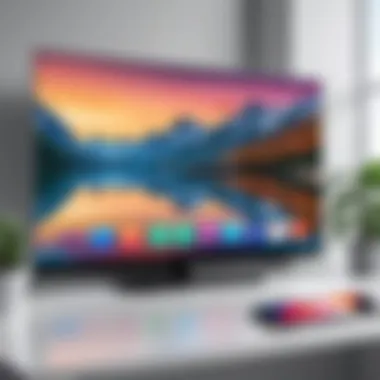
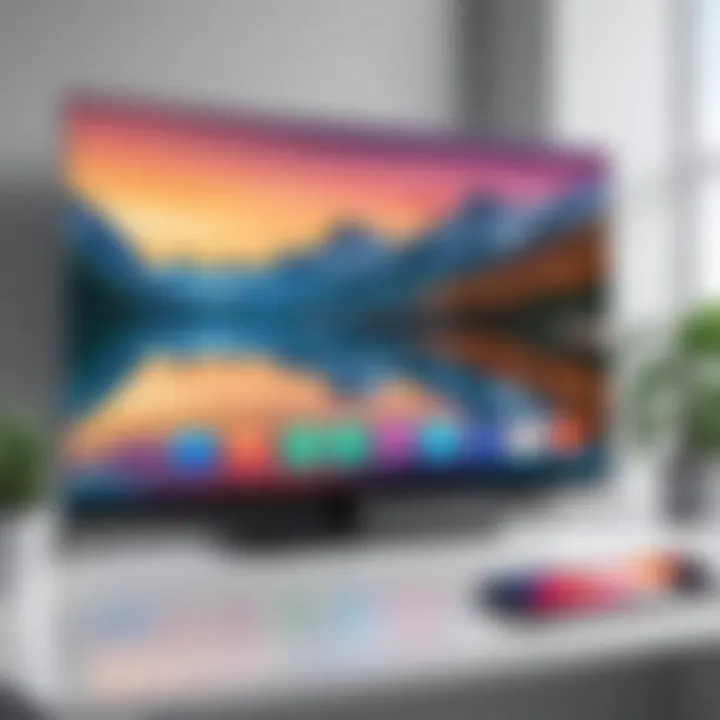
HDMI Cable Connection
The HDMI cable connection is another straightforward method for mirroring an iPhone to an Android TV. This method ensures a reliable and stable connection, which is especially beneficial for high-definition content. Using a cable requires fewer setup adjustments compared to wireless methods.
For users opting for this route, a digital AV adapter might be necessary. This adapter connects the iPhone’s Lightning port to the HDMI port of the Android TV. Following that, users can switch the TV input to HDMI, and content will directly display on the screen.
Key Steps for HDMI Cable Connection:
- Obtain a Lightning to HDMI adapter.
- Connect the adapter to your iPhone.
- Use an HDMI cable to connect the adapter to the Android TV’s HDMI port.
- Change the TV input to the corresponding HDMI channel.
Using an HDMI connection is particularly advantageous for users favoring stability and quality. It is less susceptible to interruptions, unlike wireless options. However, the need for cables might limit mobility, as users cannot move their iPhones freely while mirroring.
In summary, both Chromecast and HDMI cable connections present viable alternatives for screen mirroring. Understanding these options equips users with informed choices that can enhance their media experiences significantly.
The best method to mirror your iPhone entirely depends on your situation and preferences. Take the time to consider your choices carefully.
Through exploring these alternative solutions, tech-savvy individuals can enhance their engagement with multimedia content seamlessly.
Security Considerations
When mirroring your iPhone to an Android TV, security considerations become crucial. While the convenience of screen mirroring is appealing, it introduces potential vulnerabilities. Understanding these risks helps to enhance the safety of your personal data. By taking necessary precautions, you can ensure a secure and enjoyable viewing experience.
Data Privacy Risks
One primary concern in screen mirroring is the risk of data privacy breaches. When you connect your iPhone to an Android TV, data transmission occurs over the network. If someone else has access to the same network, it is possible for them to intercept this data. Sensitive information, such as login credentials, emails, or personal photos, could become vulnerable during transmission. To mitigate these risks, it is wise to:
- Use a secure Wi-Fi network.
- Avoid using public or shared networks for mirroring.
- Regularly update your devices to patch security vulnerabilities.
"Ensuring your data remains private is essential, especially when connecting devices that share access to your personal information."
Securing Your Network
Securing your network adds another layer of protection while mirroring your iPhone to an Android TV. A robust security setup can significantly reduce exposure to outside threats. Here are some strategies:
- Change Default Router Credentials: Many routers come with default usernames and passwords. Change these to unique credentials to prevent unauthorized access.
- Enable WPA3 Encryption: If your router supports it, use WPA3 encryption. This is the latest wireless security standard and offers better protection against potential intruders.
- Disable Guest Networks: If possible, disable guest network access. By limiting the number of devices connected to your network, you minimize the risk of data breaches.
- Use a VPN: A Virtual Private Network (VPN) can encrypt your internet traffic, making it more difficult for hackers to intercept your information.
Taking proactive measures to secure your network will not only protect your data but also enhance your overall experience while mirroring devices.
Future of Screen Mirroring Technology
Screen mirroring technology continues to evolve, reflecting the growing integration of smart devices in our daily lives. The importance of this topic within the context of mirroring iPhones to Android TVs cannot be overstated. As more users seek seamless experiences between their mobile devices and televisions, the advancements in mirroring technologies become even more crucial.
Understanding and keeping pace with these changes allows users not only to maximize their viewing experiences but also to stay tuned into enhancements that could simplify or enhance these processes. New technologies are not just innovations but solutions to existing limitations encountered in earlier systems.
Several specific elements underlie the promising future of screen mirroring technology:
- Increased Speed and Performance: New protocols, such as Miracast and improved Wi-Fi standards, contribute to faster data transfer, resulting in high-quality, lag-free experiences.
- Expanded Compatibility: Emerging technologies will likely support a broader range of devices. This includes different operating systems and various hardware models, thereby making it easier to connect diverse devices.
- User-Friendly Interfaces: Future iterations may prioritize design and interactions that cater to all users, not just the tech-savvy. The simplification of the connection process is also an ongoing goal.
- Enhanced Security Features: With increased mirroring comes the potential for data vulnerabilities. Therefore, advances in encryption and security protocols will be pivotal in assuring users that their data and personal information remains secure.
These advancements open up several benefits for consumers. Firstly, they create a more efficient device ecosystem where users can quickly shift between their iPhone and Android TV without complex setups or extensive troubleshooting. Secondly, as we move towards a more connected environment, features that facilitate multi-device interactions will greatly enhance user experience. However, it's essential to remain vigilant regarding the potential privacy concerns that these advancements may raise.
"As technology evolves, so does the landscape of digital communication and interaction, shaping how we connect and share our experiences."
Emerging Trends
The landscape of screen mirroring is rapidly changing, leading to several notable trends worth discussing:
- Wireless Technologies: Wi-Fi 6 and Bluetooth advancements are enabling faster, more stable connections, reducing delays and improving overall quality.
- Smart Home Integration: More devices are being designed with compatibility features, allowing for easier access within a smart home ecosystem, providing cohesive and user-friendly setups.
- Cloud-Based Solutions: Streaming content from the cloud rather than relying on local device storage is becoming more common, ensuring users have access to content without the constraints of their physical devices.
These trends signify a shift towards seamless integration and heightened capabilities in screen mirroring technology, reflecting evolving consumer needs and behavior.
Ending
In the realm of technological connectivity, being able to mirror an iPhone to an Android TV is an invaluable skill. This article detailed comprehensive methods to achieve this, focusing on various tools and techniques available for users without incurring any costs. This not only enhances your viewing experience but also adds a layer of interactivity to how content can be shared and consumed.
The successful mirroring of your iPhone to Android TV can lead to greater enjoyment of media. Watching videos, playing games, or utilizing productivity apps on a larger screen can vastly improve the experience. Moreover, mirroring allows for easier sharing during gatherings or presentations, creating a more communal and engaging atmosphere.
When considering the implications of screen mirroring, one must also reflect on the technical requirements and possible challenges that might arise. Issues such as connectivity hiccups or latency could disrupt the otherwise seamless experience. Therefore, having a clear grasp of setup processes and troubleshooting strategies cannot be overstated.
Ultimately, this guide illuminates valuable insights that cater to tech-savvy individuals who seek to optimize their multimedia consumption. Being knowledgeable about these methods not only enhances personal entertainment but also leverages the capabilities of existing devices to their fullest potential.
Summary of Key Points
- Understanding the technical specifications and compatibility between iPhones and Android TVs is crucial.
- Utilizing built-in features can simplify the process, but many third-party applications provide more robust functionality.
- Establishing a stable connection through proper network setup is essential for a smooth experience.
- Troubleshooting common issues can prevent frustration and ensure that your viewing sessions remain enjoyable.
- Security considerations protect your personal data while maximizing your device's capabilities.
- Keeping abreast of emerging trends in screen mirroring technology can provide more opportunities for enhanced user experiences.
By following the guidance outlined in this article, you can confidently explore the possibilities that come with mirroring your iPhone to an Android TV.







